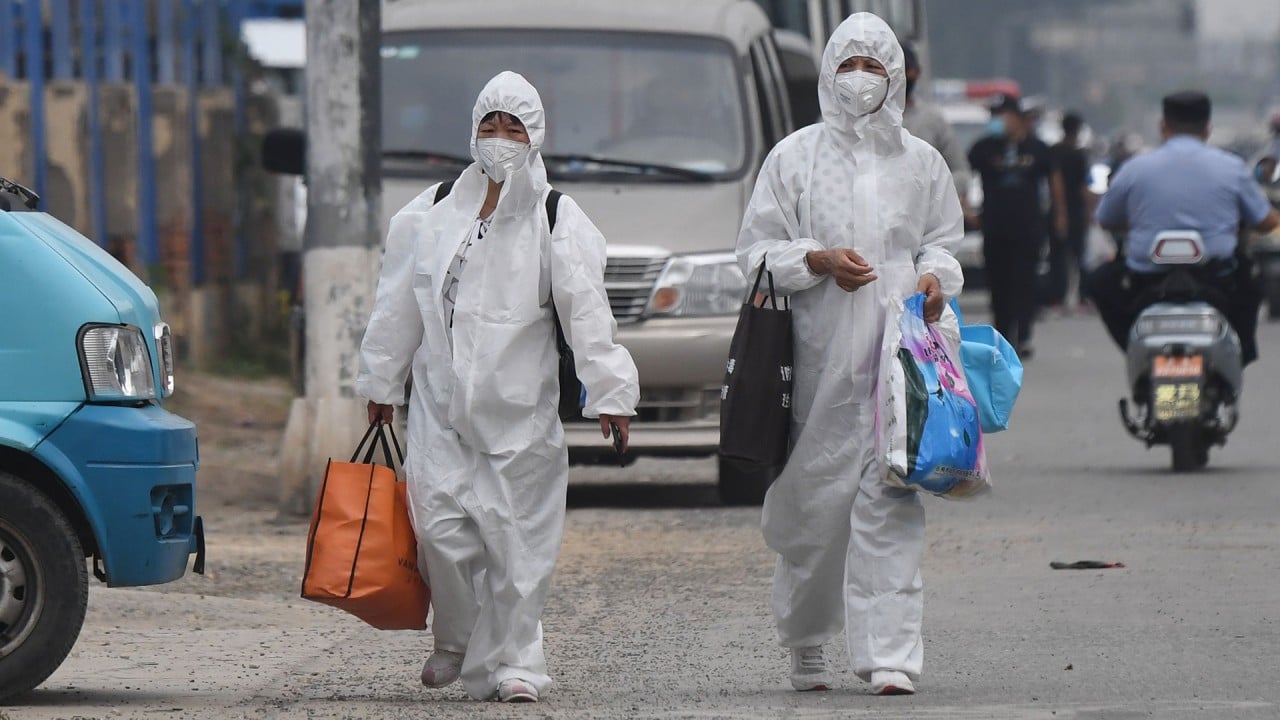China confirms more than 40 per cent of population survived on just US$141 per month in 2019
- Last year, the bottom 40 per cent of Chinese households ranked by income, totalling more than 600 million people, had a per capita disposable income of 11,485 yuan (US$1,621)
- The data confirmed the surprising claim made by Chinese Premier Li Keqiang at the end of the National People’s Congress in May

More than 40 per cent of China’s population earned only about 1,000 yuan (US$141) per month last year, the top economic data agency confirmed on Monday, setting the stage for further debate over the income gap in the world’s second largest economy.
The data, quoted in an abstract of the yet to be published statistical yearbook covering 2019, confirmed the surprising claim made by Chinese Premier Li Keqiang at the end of the National People’s Congress in May.
Last year, the bottom 40 per cent of Chinese households ranked by income, totalling more than 600 million people out of a population of 1.4 billion people, had a per capita disposable income of 11,485 yuan (US$1,621), an average of 957 yuan per month, according to the annual household income and expenditure survey conducted by National Bureau of Statistics (NBS).
In 2018, the same group earned a per capita disposable monthly income of 866 yuan.
The NBS quoted the abstract from the 2020 China Statistical Yearbook in response to a media inquiry on Monday, with the full report not expected to be published until later this year. The official publication date of the abstract was listed as May 1, prior to Li’s speech at the end of the National People’s Congress on May 28.
“China is still the largest developing country in the world. The income level of a large number of residents in rural areas and the central and western regions is still low. The task of alleviating poverty and revitalising rural areas is very arduous,” the NBS said.
“At the same time, it should also be noted that as the Chinese economy continues to develop, more and more low-income and lower than middle-income groups will be converted into middle-income people. China’s domestic market has great potential and there is no end to its development.”
The new income data also shed light on the level of inequality in China, which could expand further in the wake of the coronavirus outbreak as the virus hit low-income groups including self-employed business owners and migrant workers particularly hard.

01:39
New coronavirus outbreak at Beijing food market fuels fears of second wave of cases in China
The bottom 40 per cent of households includes both low-income and lower than middle-income citizens, according to the NBS. The low income group earned a monthly income of less than 1,000 yuan per capita, while the other group earned more than 1,000 yuan.
Meanwhile, in 2019, the top 20 per cent of households earned a monthly per capita income of 6,367 yuan (US$899).
While China is the world’s largest economy when measured by purchasing power parity, its per capita gross domestic product is still lagging far behind developed countries as its income distribution tilts sharply towards the state, resulting in a situation commonly referred to as “rich state, poor people.” Income disparity between rural and urban populations further complicates the picture.
The Gini coefficient – a measure of a population’s inequality – rose three years in a row from 2015, reaching a high of 0.468 in 2018, before dropping slightly to 0.465 in 2019, according to government data. A reading of zero indicates equality within a society, while a reading of one would indicate inequality.